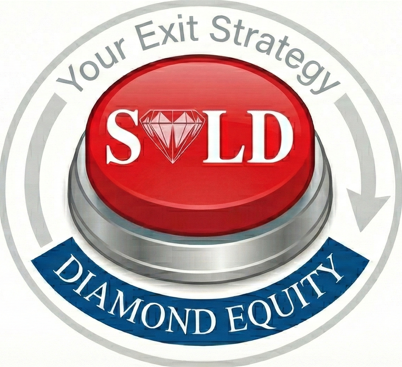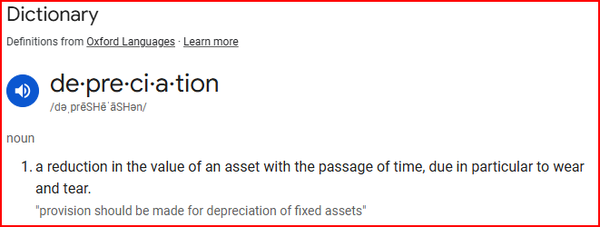The True Value of Commercial Real Estate – The Net Operating Income
In the world of investing, assets are valued on a spectrum between pure emotion and pure math. On one end, you have assets like fine art or classic cars, where value is almost entirely subjective. On the other, you have commercial real estate (CRE).
While a “trophy” property might have some emotional pull, the true value of an income-producing property like a retail center or industrial warehouse is driven by one thing: its Net Operating Income (NOI). The NOI is the engine of the property. It is the total income generated (rents, etc.) minus all operating expenses (taxes, insurance, maintenance). This simple number dictates what an investor is willing to pay.
Income vs. Emotion: A Valuation Breakdown
Not all assets are valued equally. The driving force behind the price tag changes dramatically depending on the asset class.
Single-Family Residential:
Value Weighting (Approx): 60% Emotion / 40% Income
Value is driven significantly by emotion. A buyer is purchasing a home, not just a cash flow stream. They factor in school districts, kitchen finishes, and the “feel” of the neighborhood. I ABSOLUTELY LOVE buying, renovating, & selling houses for this exact reason. You have a chance to sell to an emotional buyer on the exit.
Stocks (Publicly Traded):
Value Weighting (Approx): 50% Emotion / 50% Income
This is the ultimate hybrid. A stock’s value should be driven by its fundamentals—earnings, dividends (income), and future growth potential. However, the market is also a massive voting machine driven by daily news, fear, and hype. A stock with zero income can skyrocket based purely on market sentiment. If you can get on the right side of the buy-recognizing the potential for emotional expansion-you can win big. Think Tesla stock bought in 2020 or Netflix stock bought 2 years ago. Ah, but there is also the skill/luck necessary to “HODL”….
Commercial (Retail/Industrial):
Value Weighting (Approx): 95% Income / 5% Emotion
Value is driven by mathematics. A buyer is purchasing a business asset. The only questions that matter are “How much does it pay?” and “For how long?”
This fundamental difference is why NOI is the king of all metrics in commercial real estate. The entire valuation is an expression of the perceived risk and durability of that income stream.
Why Retail & Industrial Leases are Different
In the retail and industrial sectors, the lease agreement itself & the durable income stream it provides is the most valuable asset—even more so than the physical building. The remaining lease term is critical; a 10-year lease with a national corporation provides a bond-like, predictable return that investors will pay a premium for. A building with only one year left on its lease is a speculation, not a stable investment. In fact, it is viewed as completely vacant by buyers & their lenders. Impossible to get a loan=lower purchase price is needed.
Tenant Options Restrict Value
Furthermore, in strong markets, a lack of tenant options to extend the lease gives landlords significant leverage. If an industrial tenant has only one or two other buildings in the submarket that meet their needs, the landlord has immense pricing power at renewal. Properties with many extensions create challenges to unlocking the full value of the property by bringing rents to the true market price.
Releasing is EXPENSIVE!!
However, on the other hand, when a lease does expire, the costs to “re-tenant” the space are substantial. An owner must often budget for 6-18 months of vacancy-paying mtg, taxes, & insurance- hefty leasing commissions, and often tens or hundreds of thousands of dollars in tenant build-out costs to attract a new user. Obtaining that durable income stream-that tenant-often costs as much as 20%-50% of the value of the building once that lease is signed.
The best time to sell is when you have a fresh lease with long term.
When the NOI Fails: Understanding Tenant RiskThe subject of any email about CRE should be: “How durable is the income stream?” Because when the NOI falters, the property’s value collapses. This failure typically comes in two forms:
The “Credit Tenant” Bankruptcy: Many investors bank on the security of a large, national, publicly-traded company. However, as we’ve seen with recent large-scale bankruptcies (Rite Aid, Big Lots, Ruby Tuesday-to name a few), this “guaranteed” income can vanish overnight. When an anchor tenant goes dark, it can trigger co-tenancy clauses, allowing smaller tenants to break their leases, causing a catastrophic domino effect on the property’s NOI.
The Fragile Local Tenant: On the other end of the spectrum is the small, local “mom-and-pop” tenant. While they may be the heart of the community, their income stream is often fragile. They are highly susceptible to local economic downturns, new competition, or even personal health issues. A two-month dip in sales could be the end of their business—and your rent check.
We Buy Value Add Commercial & a Boat Load of Houses throughout the U.S.
(I Need a $3M-$9M purchase to close by year end.)
- Industrial & Commercial Property, 10K sq. ft. – 250K sq. ft.
- Mobile Home Communities (50 pad minimum)
- Well located Retail Development Sites
- Residential MFR & SFR
- Ideally long term rented asset with below market rents
Recent Portfolio Exit Volume
- 2021 $54,615,000
- 2022 $54,547,000
- 2023 $57,489,000
- 2024 $52,164,000
- 2025 YTD $48,497,000



